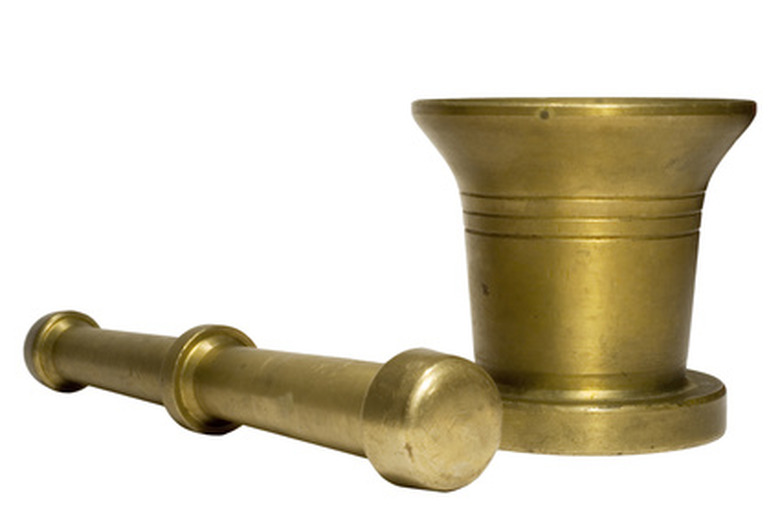How To Extract Gold From Quartz
Quartz and gold are commonly found together, but this is where the two minerals' similarities end. Quartz is a plentiful mineral, whereas gold is rare and prized. Even though the minerals are found together physically, their structural differences make them easy to separate.
Step 1
While wearing safety glasses, break up the rocks with your hammer to separate the gold. As you go, put the isolated pieces of gold into your container. Pieces that contain both quartz and gold should be crushed into pieces smaller than 1 inch. Place your rocks on a smooth, solid surface. Place your cloth over your rock specimens to prevent lose debris from scattering.
Step 2
Place the smaller pieces into the mortar; pound the rocks with the pestle until you break up the rocks into grains. Your samples need to be crushed into pieces small enough to run through the sieve. As you proceed, pick out the separate pieces of gold.
Step 3
Run the material through the sieve. Return particles that do not go through the sieve back to the mortar and pestle and Grind them until they fit through the sieve.
Step 4
Place all the powder that fit through the sieve into your gold pan. Use the gold panning method to separate the quartz and gold. Submerge the gold pan under water and rotate it. Lift the pan out of water while continuing to spin. Repeat this process until the material in the pan is gone.
Step 5
Due to their density, gold flakes and nuggets will collect around the lower ridge of the gold pan. Remove the gold and place into your container.
Things Needed
- Rock specimens
- Safety glasses
- Cloth
- Hammer
- Container
- Mortar and pestle, preferably cast iron
- Sieve
- Gold pan
- Bucket
- Water
TL;DR (Too Long; Didn't Read)
Gold will easily be separated due its property of being malleable, quartz on the other hand will crush into very fine particles. It will be easier to break up your rocks by hammering them along the seams, or at the contact points between the quartz and gold.
Warning
Before smashing up all your rocks, determine if any may have special collector value. While quartz is plentiful, certain forms are rare. If you have snow white quartz, clear quartz or crystal quartz, your samples may have collector value.
Cite This Article
MLA
Clark, Lea. "How To Extract Gold From Quartz" sciencing.com, https://www.sciencing.com/extract-gold-quartz-6142125/. 24 April 2017.
APA
Clark, Lea. (2017, April 24). How To Extract Gold From Quartz. sciencing.com. Retrieved from https://www.sciencing.com/extract-gold-quartz-6142125/
Chicago
Clark, Lea. How To Extract Gold From Quartz last modified March 24, 2022. https://www.sciencing.com/extract-gold-quartz-6142125/
